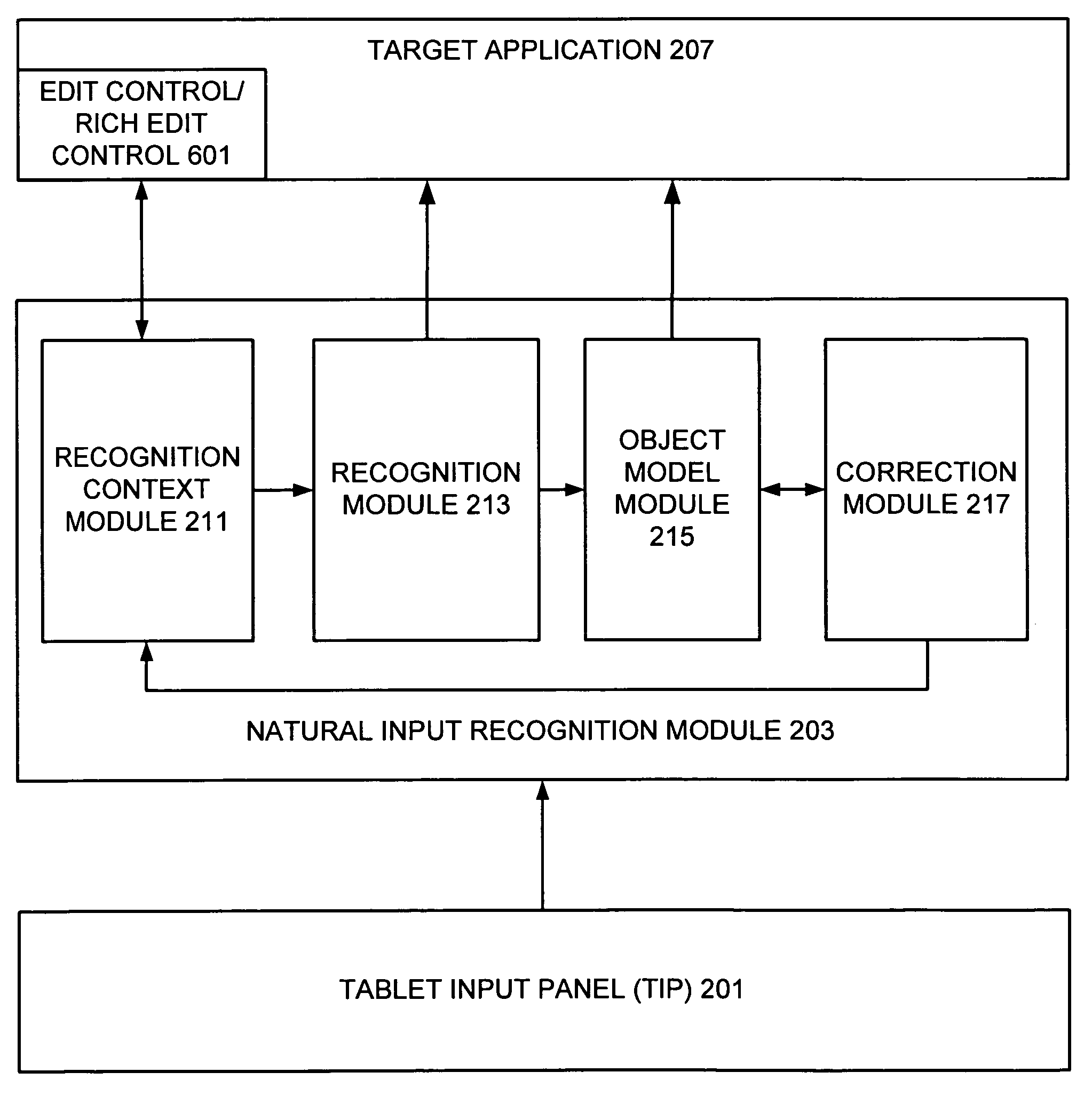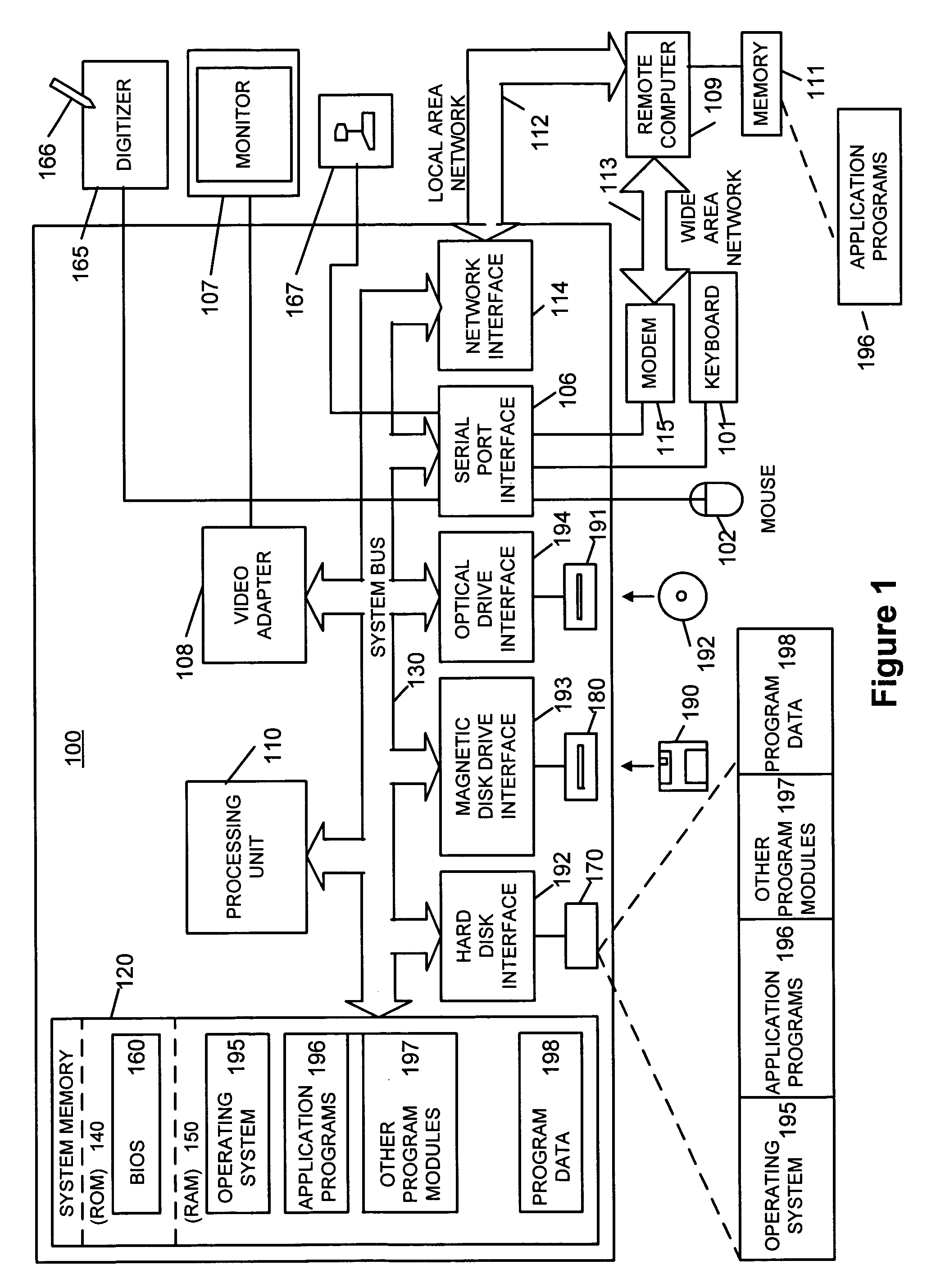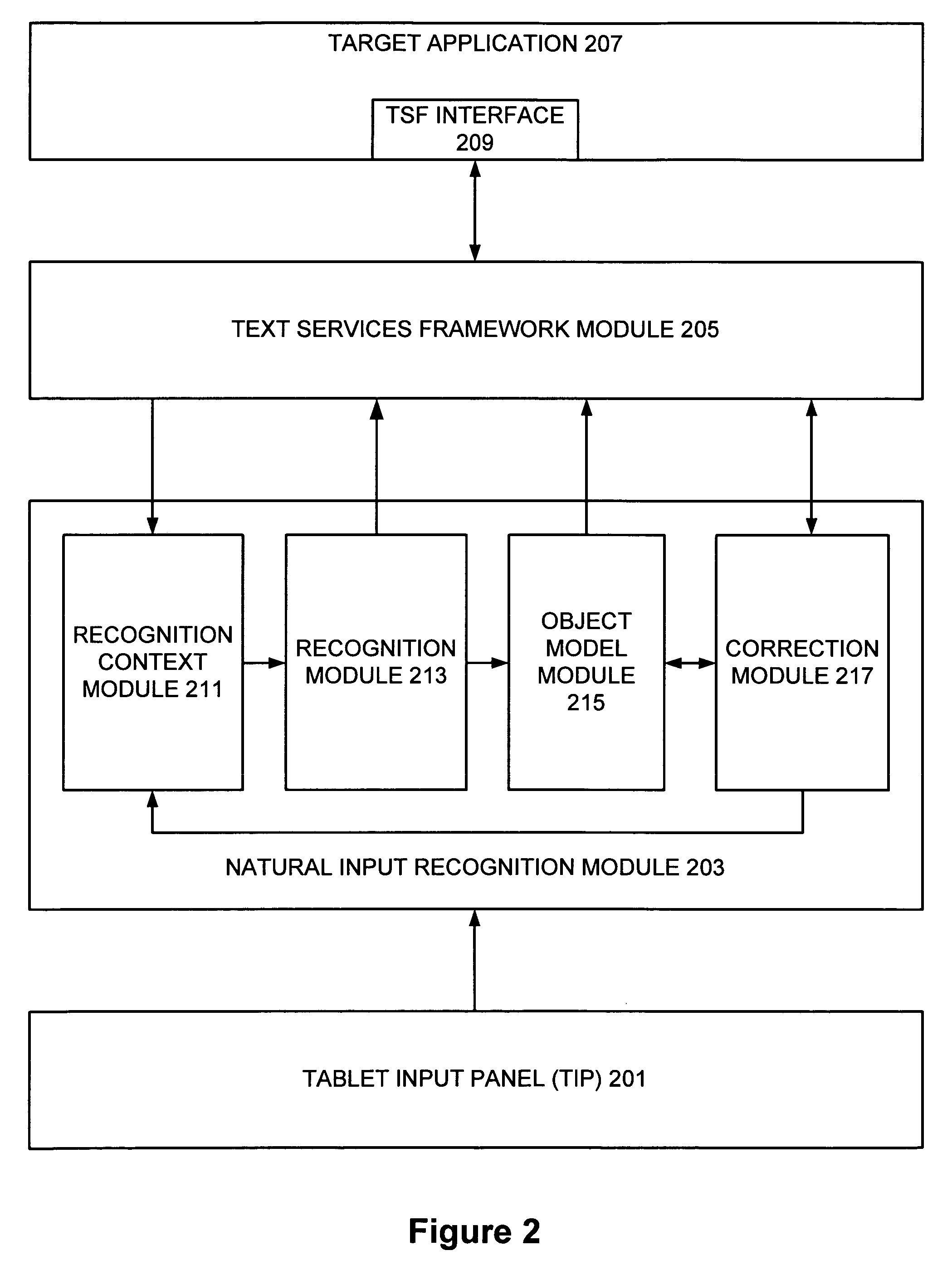Natural input recognition tool
a recognition tool and input technology, applied in the field of recognition tools, can solve the problems of additional difficulties in correctly formatting recognized text, difficult for a natural input recognition engine to determine, and significant reduction of that potential, so as to improve the user's recognition experien
- Summary
- Abstract
- Description
- Claims
- Application Information
AI Technical Summary
Benefits of technology
Problems solved by technology
Method used
Image
Examples
Embodiment Construction
Overview
[0017]The present invention relates to a recognition tool for more accurately recognizing and formatting text from natural input. A recognition tool according to the invention may be implemented with instructions that can be executed on a computing device. Accordingly, an exemplary computing environment for executing such instructions will be described. The components and functions of a recognition tool according to the invention will be described in detail as well, along with a correction interface that maybe employed by the recognition tool according to the invention.
Exemplary Operating Environment
[0018]As previously noted, the text recognition tool of the invention may be implemented using software. That is, the recognition tool may be described in the general context of computer-executable instructions, such as program modules, executed by one or more computing devices. Generally, program modules include routines, programs, objects, components, data structures, etc. that...
PUM
 Login to View More
Login to View More Abstract
Description
Claims
Application Information
 Login to View More
Login to View More - R&D
- Intellectual Property
- Life Sciences
- Materials
- Tech Scout
- Unparalleled Data Quality
- Higher Quality Content
- 60% Fewer Hallucinations
Browse by: Latest US Patents, China's latest patents, Technical Efficacy Thesaurus, Application Domain, Technology Topic, Popular Technical Reports.
© 2025 PatSnap. All rights reserved.Legal|Privacy policy|Modern Slavery Act Transparency Statement|Sitemap|About US| Contact US: help@patsnap.com



